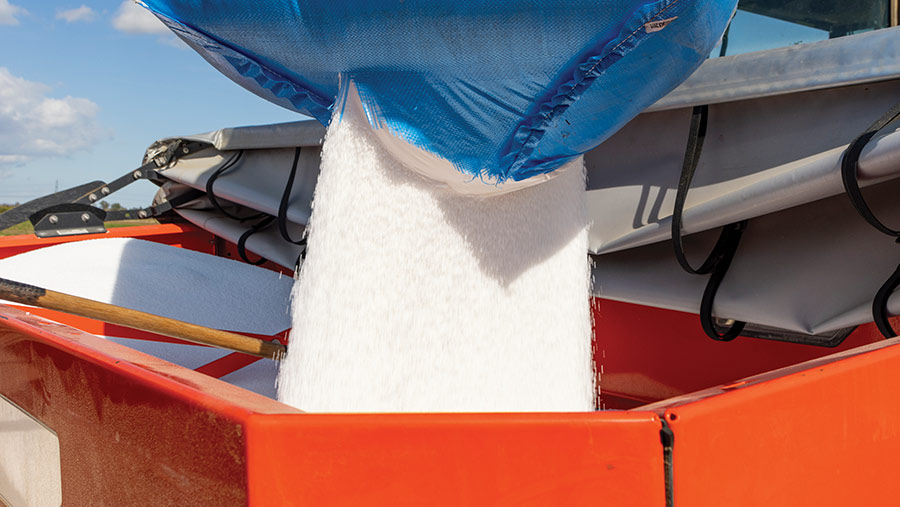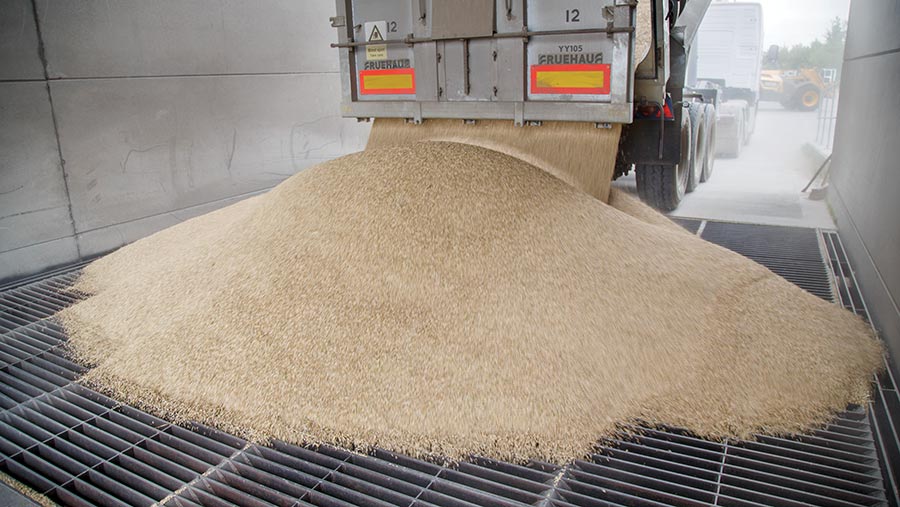Analysis: How arable farms can ease market volatility impact
 © GNP
© GNP The extent to which both output and input prices have swung about in recent years has surprised even the most seasoned of farming industry stakeholders.
For example, in the first four months of 2022, feed wheat prices increased by more than £100/t, peaking at £319/t in April 2022 in response to Russia’s invasion of Ukraine.
Since then, values have almost halved, averaging just £168/t on 9 June 2023.
See also: Farm profit forecasts point to focus on fixed costs
During the same period, input costs such as red diesel and fertiliser, shot up to record highs, before dropping to more regular levels.
So how can farmers hope to contend with such cataclysmic events?
Ceres Rural managing partner Richard Means says the key areas to focus on are:
- knowing the cost of production
- having a marketing strategy
- monitoring cashflow
- using break crops
- considering new support schemes
- having a machinery replacement policy
“You have to not only benchmark on historic figures, but also based on your high input costs for 2023 and now some significantly lower fertiliser costs for 2024,” he says.
Cost of production
Rising prices last year meant many farmers bought fertiliser quite early and at higher prices than where they are now.
With this in mind, knowing what your costs are so as to assist with your marketing decisions is an absolute must, he says.
“The cost of production (for wheat), subject to the yield, could be in the region of £190/t for 2023.
With the Basic Payment Scheme (BPS) dropping to 50% of what it was, you’ve got to make money selling the crops. The safety net to make up the difference and give you a profit is rapidly diminishing.”
Marketing strategy
If purchasing fertiliser early, as many farmers did last year, consultants recommend committing at least some of the next year’s crop at that point as well.
Marketing wise, farmers need to know they will see a positive margin based on reasonably conservative five-year yield estimates.
“Costs are one thing, but having a marketing strategy for your crops is vital,” says Richard.
“It is unlikely you can always hit the top of the market, so a ‘better than average’ result is a positive target to aim for.
“Benchmarking can be done with a small tonnage on a tracker to allow a comparison or even in a pool,” he suggests.
Having a forecast budget and a draft cropping plan for the following year also allow farm businesses to know in advance how much fertiliser will be needed.
Cashflow
Cashflow planning for the year is another crucial element to limit volatility, so farm businesses know what they can afford and when.
High prices in 2022 meant many farm businesses sold grain relatively well early on, which created a healthy cashflow.
Looking ahead, Richard says farmers need to assess cashflow, to work out whether they can take advantage of a lower early season fertiliser price.
With interest rates where they are, the premium for delayed payments is going to be bigger than farmers may be used to.
“Doing your cashflow projections and knowing whether you can afford to buy your fertiliser upfront on 28-day terms is even more important,” he says.

© GNP
Break crops
The effectiveness of lower margin break crops and other alternatives will vary from farm to farm, with different soil types and land quality important to the decision-making process.
But looking at average gross margins from some of the poorer performing break crops on less productive soil types during the past few years, Richard suggests some farms would have been better off incorporating rotational Countryside Stewardship options.
Conversely, there will be farms which get good returns from all their break crops, so it’s one to watch.
Without BPS, growing first wheat and high margin break crops is great, he says. But low margin break crops will do little for the bottom line.
Sustainable Farming Incentive
Many farmers are yet to fully engage in the Sustainable Farming Incentive (SFI), but this can offer additional income with little change to farm management needed, especially at the “introductory” level.
Current payment rates under the 2022 soil scheme are £22/ha for “introductory” standards and £40/ha for “intermediate” measures plus a further £20/ha on the first 50ha to assist with the additional management input.
“If still concerned, start at the introductory level, and then each year, you have the ability to enhance levels. So you can go up tiers, but you can’t drop down,” says Richard.
Additional SFI standards, such as integrated pest management (IPM) and nutrient management, will be available later this summer.
“One option that is generating some interest under the IPM standard is the non-insecticide use at £45/ha,” he says. “There are crops that farmers can quite easily commit to not putting insecticide on.”
Machinery replacement
Finally, Richard points to the need to have a machinery replacement policy to help contend with volatility, especially given the extended lead times on equipment deliveries.
Many businesses operate a five-year machinery plan on farm, which helps spread the cost of capital expenditure or financing options.
AHDB advice
Megan Hesketh, AHDB senior cereals and oilseeds analyst, says one way to manage risk at a time of volatile price movements is to concentrate on performance.
“With input costs remaining high, understanding budgets, setting goals, and minimising overheads can be a great place to start,” she says.
“Knowing your breakeven point is crucial to knowing what price per tonne you will need to make a profit.
“This is a good activity to do now, for harvest 2023, to have a good idea of your variable costs.”
Megan adds that it is important to really focus on the details, whether that’s following market trends, looking closely at farm costs, or monitoring crop growth.
“Have a positive mindset for innovation, change and continuous improvement,” she advises.
“Utilise the information out there, whether that’s to specialise in a certain area, explore other income options such as government schemes, or engage in private markets.
Future Farming Resilience Fund
Free business advice is available to farmers through Defra’s Future Farming Resilience Fund.
The scale-up phase of the fund is ongoing, with support for up to 32,000 farm businesses available through consultants.
What’s on offer varies between providers, with some including one-to-one consultations, benchmarking, workshops, and farm visits. More information can be found on the gov.uk website.
Case study – Learning to live with price volatility
Arable farmer Keith Challen manages 1,200ha of mainly wheat, oilseed rape and elderflower on heavy clay soils in the Vale of Belvoir, Leicestershire, for Belvoir Farming Company.
“Grain marketing is always a tricky one,” he says.
“I tend to deal with people I know and trust and have dealt with for a long time, but a lot called it wrong this year.
“I have sold most of the (2023) wheat now, but not at the top of the market.”
Keith says he also paid a lot for fertiliser last year after farmers were warned there might not be any, so carried fertiliser over at more than current prices.
To minimise any further risks, he has sold some grain forward for 2024 and 2025, knowing that it will still make a margin.
SFI
“The best you can do is lock out both ends and hope for a better than average year,” he says.
But with BPS dropping away rapidly, double-digit inflation, and ag-chem prices up 10-15%, it’s very difficult.
“We are price takers at both ends, not price makers, so volatility is just part of the equation we are in,” he says.
Keith expects to be doing more under SFI to reduce the risk to the business, seeing it as some kind of guaranteed an income.
“We will probably be a bit more robust in how we decide which areas we are going to farm in future. I think it’s quite possible we will take more land out of production to guarantee income.
“We are a little bit in the dark in all aspects of what we do. We all thought we would have more clarity on SFI than we actually got.”
Keith is also disappointed that subsidy cuts post-Brexit have not yet been fully returned to farmers, and is looking at ways to diversify the business for additional income.
